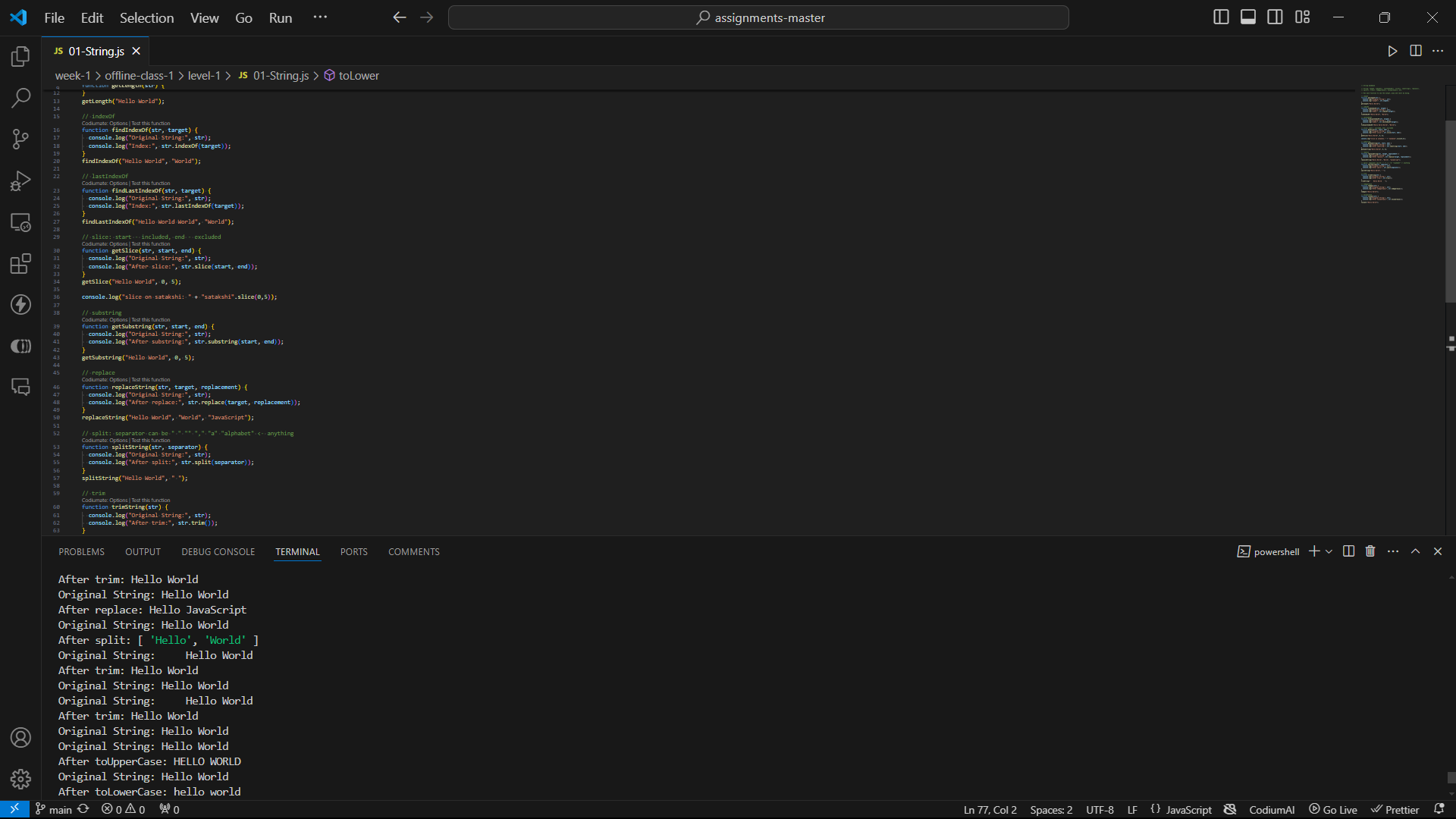Understanding JavaScript String Methods: A Practical Guide
 Satakshi Shanvi
Satakshi Shanvi
Strings are one of the most fundamental data types in JavaScript. They are used to represent and manipulate text. JavaScript provides a variety of built-in methods to handle strings efficiently.
Today, we'll explore some essential string methods, including length, indexOf(), lastIndexOf(), slice(), substring(), replace(), split(), trim(), toUpperCase(), and toLowerCase().
Let's dive in and see how these methods work through practical examples.
String Length
The length property returns the number of characters in a string.
function getLength(str) {
console.log("Original String:", str);
console.log("Length:", str.length);
}
getLength("Hello World");
Output:
Original String: Hello World
Length: 11
Finding Index of a Substring
The indexOf() method returns the index of the first occurrence of a specified substring.
function findIndexOf(str, target) {
console.log("Original String:", str);
console.log("Index:", str.indexOf(target));
}
findIndexOf("Hello World", "World");
Output:
Original String: Hello World
Index: 6
Finding Last Index of a Substring
The lastIndexOf() method returns the index of the last occurrence of a specified substring.
function findLastIndexOf(str, target) {
console.log("Original String:", str);
console.log("Index:", str.lastIndexOf(target));
}
findLastIndexOf("Hello World World", "World");
Output:
Original String: Hello World World
Index: 12
Extracting a Portion of a String
The slice() method extracts a section of a string and returns it as a new string. The start index is inclusive, and the end index is exclusive.
function getSlice(str, start, end) {
console.log("Original String:", str);
console.log("After slice:", str.slice(start, end));
}
getSlice("Hello World", 0, 5);
Output:
Original String: Hello World
After slice: Hello
Extracting a Substring
The substring() method is similar to slice(), but it doesn't accept negative indices.
function getSubstring(str, start, end) {
console.log("Original String:", str);
console.log("After substring:", str.substring(start, end));
}
getSubstring("Hello World", 0, 5);
Output:
Original String: Hello World
After substring: Hello
Replacing Substrings
The replace() method searches for a specified value or a regular expression in a string and returns a new string with the specified value replaced.
function replaceString(str, target, replacement) {
console.log("Original String:", str);
console.log("After replace:", str.replace(target, replacement));
}
replaceString("Hello World", "World", "JavaScript");
Output:
Original String: Hello World
After replace: Hello JavaScript
Splitting a String into an Array
The split() method divides a string into an array of substrings using a specified separator.
function splitString(str, separator) {
console.log("Original String:", str);
console.log("After split:", str.split(separator));
}
splitString("Hello World", " ");
Output:
Original String: Hello World
After split: ["Hello", "World"]
Trimming Whitespace
The trim() method removes whitespace from both ends of a string.
function trimString(str) {
console.log("Original String:", str);
console.log("After trim:", str.trim());
}
trimString(" Hello World ");
Output:
Original String: Hello World
After trim: Hello World
Converting to Uppercase
The toUpperCase() method converts a string to uppercase letters.
function toUpper(str) {
console.log("Original String:", str);
console.log("After toUpperCase:", str.toUpperCase());
}
toUpper("Hello World");
Output:
Original String: Hello World
After toUpperCase: HELLO WORLD
Converting to Lowercase
The toLowerCase() method converts a string to lowercase letters.
function toLower(str) {
console.log("Original String:", str);
console.log("After toLowerCase:", str.toLowerCase());
}
toLower("Hello World");
Output:
Original String: Hello World
After toLowerCase: hello world
Subscribe to my newsletter
Read articles from Satakshi Shanvi directly inside your inbox. Subscribe to the newsletter, and don't miss out.
Written by
